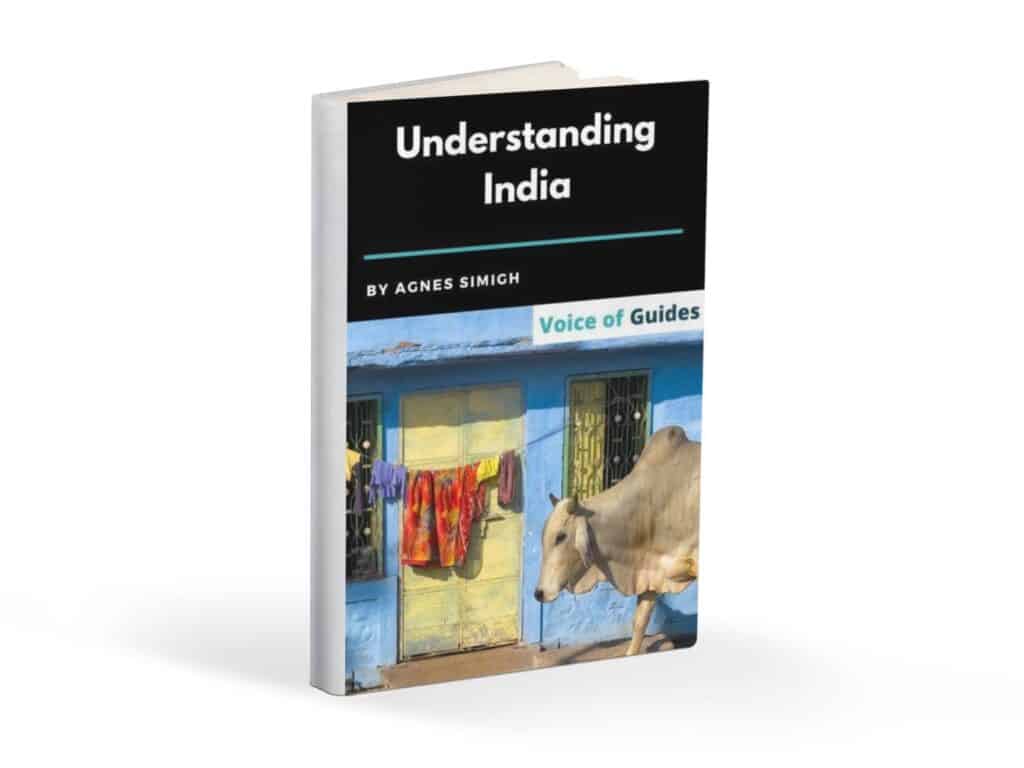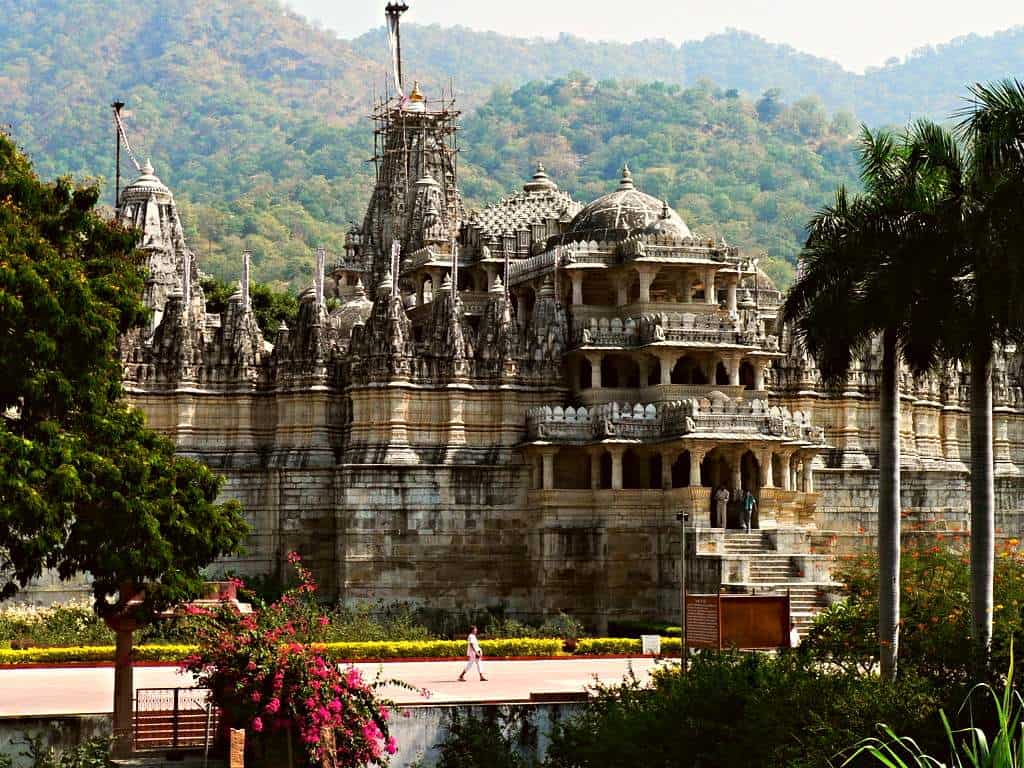The principles of Jainism show several similarities with Buddhism, and some people believe that it is a form of Hinduism. Respect for life and non-violence (ahimsa) is the central principle of this religion. According to the Jain, every living entity on earth has a soul, even a plant or an animal. They respect all of them. They are strictly vegetarians, some of them vegans, and refrain from pursuing activities that entail the destruction of living beings. Nevertheless, they have always formed an influential group of Indian society.
In contrast to Buddhism, Jainism never really spread outside India. In the 1990s, there were still 7 million, now approximately 4 million Jain believers, most of them in India, especially in Rajasthan, Madhya Pradesh, Gujarat, and Karnataka.

Who are the Tirthankaras of the Jain religion?
There are no Gods or Goddesses in this religion. Instead, they believe in 24 teachers (Tirthankaras). Thanks to their abstinent lifestyle, they became masters of their bodies and emotions and finally got liberated from the eternal cycle of birth and death. Devotees do not worship them as Gods. Jains do not think they could have any influence on their lives, but they respect them. Mahavira, the last 24th Tirthankara (in the Sanskrit language: „ford-maker”) was the founder of the religion, is the largest Jain ascetic.
His immediate predecessor, Parsvanath, was the 23rd teacher and lived 250 years before Mahavira. The rest of the Tirthankaras are legendary figures thousands of years ago. The Tirthankara got through the river of rebirth and showed the direction to others. At first, they were giants, then their size gradually decreased. Their physical condition got worse, and their lifetime decreased. The first teachers were giants who lived for a very long time, even for millions of years, whereas the last Mahavira only an average human lifetime.
Read more interesting stories and facts about India
In fine arts, Tirthankaras are depicted in a standing or lotus position, with rigorous faces without facial expression. Only the symbols next to their bodies, which usually refer to the dream their mother had before they were born, distinguish them. Otherwise, they are alike.
The founder of Jainism, Mahavira
There are many similarities between Mahavira and Siddhartha Gautama Buddha, the founders of Jainism and Buddhism. They both lived in the 6th century BC. Both came from a wealthy family and decided to give up their previous welfare and dedicate their lives to find their ways to nirvana. Having quit the material world, Mahavira was wandering naked, did not care about sleep, hygiene, eating, and drinking. His main goal was to find the path to enlightenment. While Mahavira preached that only a strictly ascetic, self-inflicting lifestyle leads to nirvana, Buddha believed in “the golden middle”. According to him, neither the pursuit of pleasures nor the self-sacrificing lifestyle leads to eternal salvation because the body needs energy. Mahavira earned the title, winner (in Sanskrit: “Jina”) with the time, and the religion got the name after that.
The two branches of Jainism
At the end of the first century, religion has split up into two branches.
- The “skyclad” (digambara) sect chose the original path of Mahavira. Similar to him, they also live naked in the forest. Nudity is a symbol of being free from desire and self-control. They tear their hair out so that they do not hurt any living creature stuck in their hair. Jains believe that wearing clothes increases the desire for property. Plus, any insects can hide in their folds. They think that women are unsuitable for nirvana, so only men can join this sect. Their only personal property is a dish for washing. They accept food and drink only in their hands.
- The other one is the „white-clad” (svetambara) sect. They do not walk naked but wear white clothes. They claim that both men and women can attain enlightenment.
During the initiation ceremony, the Jain monk candidates tear their hair out. It is how they prove their self-sacrifice and renunciation of sexual life. Earlier, they tore their hair in knots with their own hands, but now they shave their head except for one lock of hair that the believer must tear out with his own hands. From that time on, he vows non-violence and refrains from violent speeches and thoughts.
Jain lifestyle
To show respect for every life, justice, respect for others’ property, seld-denial and poverty are the principles of Jainism.
The Jain motto, “non-violence is the main religious duty,” had a great impact on Mahatma Gandhi, the freedom fighter. According to the Jain, you should not be jealous, avoid disputes, be well-intentioned, and friendly to everyone. You must be charitable and help the poor, in general, to live according to the noblest moral values.
The advocates of total non-violence respect every creature. On earth, every living being has a soul, regardless if it is a plant or an animal. Therefore, all of them deserve respect! Of the many species on earth, the human being is just one, and according to Jain consciousness, people have no more rights than anyone else. Humans and non-humans have similar rights to life, and people have no more rights than any other living creature.

The followers of religion clean the path in front of their feet with a little sweep and cover their mouth with a piece of textile to avoid stepping over or inhaling some tiny, almost invisible creatures.
One attracts negative karma by killing and positive karma by saving any living creatures. Violence acts as a karmic powder on the human soul. The devotee can nullify the karma acquired in the previous life by fasting or any act of self-sacrificing.
They do not cultivate the soil because they can damage an animal that hides underneath the ground with their tools. They are strict vegetarians, and some of them are vegans. Very rigorous Jains only consume fruit. They refuse to eat underground vegetables because there is a chance to kill an insect by harvesting. According to them, even a blade of grass has a soul. There may be living beings in the fire too, so they never make or stop the fire.
The lamp is not lit at night because of the various insects it attracts. They can’t bathe because they can also harm living organisms in the water. Jains carefully examine the food before they take it to their mouths and filter the water before drinking. After sunset, they do not eat anymore, as it is harder to spot the living creatures.
Animal shelters operated by Jains
Throughout India, the Jain operate animal shelters, as they also feel responsible for sick animals.
Read more interesting stories and facts about India
In Delhi, the capital, a bird hospital was founded. In the Bundelkhand region of Central India, the ancient center of Jainism, many animal shelters for sick and elderly animals, be it birds, camels, water buffaloes, and cows have been opened. Veterinarians visit them once a week. Once recovered, the wild animals are free to return to their natural habitat. The incurable animals are taken care of until their death because respect for life stands above all. Of course, hunting is taboo for the Jain, which is considered a violent act.
Jains usually do intellectual work and belong to the high castes in Indian society.
There are many bankers and traders among them. Religion does not prohibit believers from taking part in secular life. They put aside much of their salary for donation, which manifests their asceticism. In most major cities, Jains established high schools. Throughout Indian history, they have been wealthy. Since religion does not permit them to be farmers and soldiers, most of them have become traders. Some are India’s best bankers, jewelers, and businessmen. Many Jains live in the metropolises of Bombay, Delhi, and Ahmedabad.
Pin it for later!




Pingback: 30 interesting facts and stories about India | Voice of Guides